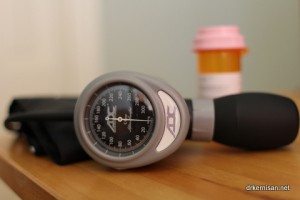Are you on medication to lower blood pressure? Or are you caring for an older person with hypertension, also known as high blood pressure?
If so, you are probably wondering just what is the right blood pressure (BP) for older adults.
This is a good question, given that guidelines on blood pressure have changed, especially due to the results of the landmark Systolic Blood Pressure Intervention Trial (abbreviated as “SPRINT”).
The SPRINT study first made headlines in part because the findings seemed to contradict expert hypertension guidelines released in December 2013, which for the first time had proposed a higher goal BP ( a systolic BP of less than 150mm mercury) for most adults aged 60 or older.
In particular, SPRINT randomly assigned participants — all of whom were aged 50 or older, and were at high risk for cardiovascular events — to have their systolic blood pressure (that’s the top number) treated to a goal of either 140, or 120. Because the study found that people randomized to a goal of 120 were experiencing better health outcomes, the study was ended early.
For those of us who specialize in optimizing the health of older adults, this was obviously an important research development that could change our medical recommendations for certain older adults.
But what about for you, or for your older relative? Do the SPRINT results mean you should talk to the doctor about changing your BP medications?
Maybe yes, but quite possibly no. In this article, I’ll help you better understand the SPRINT study and results, as well as the side-effects and special considerations for older adults at risk for falls. This way, you’ll better understand how SPRINT’s findings might inform the BP goals that you and your doctors choose to pursue.
Here’s what this post will cover:
- What is currently considered “normal” blood pressure for older adults in their 60s, 70s, 80s
- What the latest blood pressure guidelines recommend
- What to know about the landmark SPRINT blood pressure in older adults trial, including who was included and excluded, and what type of BP medications were used most often
- What the actual likelihood of benefits and harms was within SPRINT, and what you might expect if you are similar to the SPRINT participants
- Why you probably need to make a change in how your blood pressure is measured before considering a SPRINT-style systolic BP goal of 120
- My own approach and how to avoid over-treatment of high blood pressure



